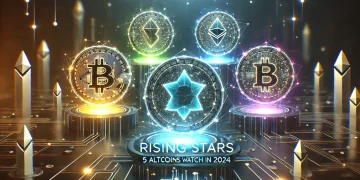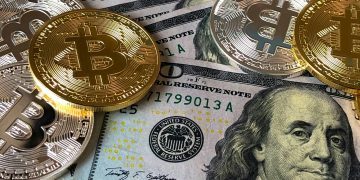Decentralized Finance, commonly known as DeFi, represents one of the most revolutionary trends in the financial sector. Built primarily on blockchain technology, DeFi offers a decentralized, trustless, and open financial system, eliminating intermediaries like banks and brokers. While DeFi has opened new financial opportunities for millions, its rapid growth has also led to significant risks, particularly frauds and scams. Among the most common and destructive scams in the DeFi space is the rug pull.
Rug pulls have led to billions of dollars in losses for unsuspecting investors, damaging the trust in decentralized systems. This article delves deep into the mechanics of rug pulls, how they happen, their impact on the DeFi ecosystem, and how users can safeguard themselves from becoming victims of this fraudulent scheme.
1. What is DeFi? A Brief Overview
Before diving into rug pulls, it’s essential to understand what DeFi is. DeFi refers to a financial system built on public blockchain networks, primarily Ethereum, that aims to replicate traditional financial services such as lending, borrowing, trading, and earning interest in a decentralized manner. Unlike traditional finance, where a central authority governs transactions, DeFi operates on smart contracts—self-executing contracts with terms directly written into code.
DeFi has the potential to democratize access to financial services, offering anyone with an internet connection the ability to participate. By using decentralized applications (dApps), users can interact with protocols in a permissionless way, meaning no one can deny their access or censor their transactions.
2. Understanding Rug Pulls: A DeFi Scammer’s Favorite Tactic
A rug pull is a malicious maneuver in the cryptocurrency and DeFi space where developers, after attracting substantial investment into a project, suddenly withdraw all funds from the liquidity pool or project wallet, leaving investors with worthless tokens. It’s akin to pulling the rug from under someone’s feet, hence the name.
Rug pulls are most commonly associated with decentralized exchanges (DEXs), where anyone can list tokens without significant oversight. This lack of regulation opens the door for malicious developers to create seemingly legitimate projects, lure in investors, and then abandon the project after making a significant profit.
3. Types of Rug Pulls in DeFi
There are several ways rug pulls can be executed, and understanding these methods can help investors identify and avoid potential scams. The two primary types are liquidity pool theft and malicious code.
Liquidity Pool Theft
In decentralized exchanges like Uniswap or SushiSwap, liquidity pools are essential for enabling token trades. A developer creates a new token, pairs it with a popular token like Ethereum (ETH), and adds liquidity to the pool. As investors buy the new token, the liquidity pool grows in size. In a liquidity pool theft, the developer eventually removes all liquidity, taking investors’ funds with them and leaving the token worthless.
This is the most common form of rug pull, as it requires minimal effort and can be executed quickly.
Malicious Code
Another method is through malicious smart contract code. DeFi protocols rely on smart contracts, and malicious developers can insert hidden functions or backdoors in the code. These hidden functions might allow the developer to mint an unlimited supply of tokens or transfer all funds to their wallet, bypassing security features that would normally protect users. This method is less frequent than liquidity pool theft but often harder to detect until it’s too late.
Pump and Dump Schemes
Though technically not a rug pull, pump and dump schemes are also common in DeFi. Developers artificially inflate the price of a token by spreading hype and false promises, encouraging investors to buy in. Once the price is high enough, developers or early investors sell off their holdings at a profit, leaving other investors with rapidly depreciating assets. In DeFi, this often happens in coordination with influencers or through misleading information on social media channels like Twitter or Telegram.
4. The Appeal of Rug Pulls to Scammers
The rise of decentralized exchanges and anonymous trading in DeFi has made it easier for bad actors to execute rug pulls. Several factors contribute to the prevalence of this scam:
- Low Barrier to Entry: Anyone with programming knowledge can create a token and list it on decentralized exchanges with no regulatory approval or oversight. This makes it easy for malicious developers to launch new projects, generate hype, and then execute a rug pull.
- Anonymity: The pseudonymous nature of DeFi allows developers to remain anonymous, hiding their real identities. This makes it difficult for authorities to track and prosecute scammers.
- Rapid Profits: The volatility of the cryptocurrency market allows tokens to gain value quickly. Scammers can profit significantly from rug pulls in a very short amount of time, often within days or even hours of launching a token.
- Hype and FOMO: Fear of missing out (FOMO) drives many investors to rush into new projects without conducting proper due diligence. Scammers exploit this by creating a sense of urgency and excitement around their tokens.
5. Case Studies: Notable Rug Pulls in DeFi
Several high-profile rug pulls have made headlines, leading to substantial losses for investors and shaking confidence in the DeFi sector. Below are some of the most notorious examples:
1. SushiSwap’s Infamous Exit Scam
In 2020, SushiSwap, a decentralized exchange protocol, became the center of a significant controversy when its anonymous founder, Chef Nomi, withdrew $14 million in developer funds from the liquidity pool. This incident initially looked like a classic rug pull. However, after intense backlash from the community, Chef Nomi returned the funds, and the project continued under new leadership. While this case did not result in a complete collapse, it highlighted the vulnerability of DeFi protocols to founder exits and loss of trust.
2. Meerkat Finance
In March 2021, Meerkat Finance, a yield farming project on the Binance Smart Chain, was rug-pulled shortly after its launch. The developers drained approximately $31 million in BNB from the liquidity pool, claiming that they had been hacked. It later became apparent that this was an inside job, with the developers executing the rug pull themselves.
3. Compounder Finance
In November 2020, Compounder Finance, a yield farming protocol, was rug-pulled by its developers, who exploited a backdoor in the smart contract. They withdrew $12.5 million worth of cryptocurrencies from investors, leaving them with worthless tokens. The malicious code had been hidden in the protocol’s smart contract, allowing the developers to steal the funds unnoticed.
6. The Impact of Rug Pulls on the DeFi Ecosystem
Rug pulls have far-reaching consequences, not just for the investors directly affected but also for the broader DeFi space. Here are some of the key impacts:
Erosion of Trust
The most immediate effect of a rug pull is a loss of trust. DeFi thrives on the trust of its users in the underlying technology, smart contracts, and developers. When rug pulls occur, especially high-profile ones, they erode confidence in decentralized projects, making investors wary of engaging with new or unknown protocols.
Regulatory Scrutiny
Rug pulls and other forms of fraud attract the attention of regulators worldwide. While DeFi was initially designed to operate outside traditional financial regulations, the prevalence of scams has prompted governments to consider imposing stricter oversight. Increased regulation could stifle innovation within the DeFi space, but it could also help protect investors from future frauds.
Financial Losses
Investors who fall victim to rug pulls suffer significant financial losses. In some cases, these losses are irreversible due to the anonymity of the scammers and the decentralized nature of the blockchain. Recovering funds from a rug pull is often impossible, especially if the stolen assets are swiftly laundered through decentralized mixers or other obfuscation techniques.
Market Volatility
Rug pulls contribute to the overall volatility of the cryptocurrency market. When significant amounts of liquidity are drained from a project, it can cause panic, leading to a broader sell-off in related tokens. This can result in sharp price declines and increased uncertainty in the market.
7. How to Identify and Avoid Rug Pulls
Despite the risks, there are several steps investors can take to protect themselves from rug pulls and other scams in the DeFi space. The key to avoiding rug pulls lies in conducting thorough due diligence and being cautious of red flags.
1. Analyze the Project’s Code
One of the most effective ways to assess the legitimacy of a DeFi project is to examine its smart contract code. Rug pulls often involve hidden backdoors or malicious code, and these can sometimes be detected by scrutinizing the code. Projects with open-source, audited contracts are generally safer, as they allow the community to verify their integrity.
2. Look for Audits
A project that has been audited by a reputable third party is less likely to be a scam. Auditors such as CertiK, Quantstamp, and Trail of Bits review a project’s smart contract code for vulnerabilities and potential exploits. However, audits are not foolproof, and some rug pulls have occurred in projects that were previously audited, so this should not be the sole criterion for trust.
3. Check Liquidity Locking
Legitimate DeFi projects typically lock their liquidity for a set period to demonstrate commitment to the long-term success of the project. If liquidity is not locked, developers can remove it at any time, which is a major red flag. Tools like Unicrypt or Team Finance can help verify whether liquidity is locked.
4. Research the Team
Anonymous teams are common in DeFi, but they present an additional risk to investors. If the team behind a project is fully anonymous, it’s important to exercise caution. Legitimate projects often have teams with public track records, LinkedIn profiles, or a history of contributions to the DeFi or cryptocurrency space.
5. Avoid Hype-Driven Projects
Rug pulls often occur in projects that gain rapid attention and excitement without a clear use case or long-term roadmap. Be cautious of projects that rely heavily on marketing and hype, but offer little in the way of technological innovation or practical application.
8. Preventing Rug Pulls: The Role of Regulation and Self-Policing
While the decentralized nature of DeFi makes it difficult to regulate, there are several measures that can be implemented to reduce the risk of rug pulls and enhance the security of the ecosystem.
1. Enhanced Regulatory Oversight
Governments and regulatory bodies are beginning to focus on the DeFi space, recognizing the potential risks posed by rug pulls and other scams. While heavy-handed regulation could stifle innovation, sensible oversight can help protect investors and promote transparency. For example, requiring DeFi projects to undergo code audits or register with regulatory bodies could deter malicious actors.
2. Decentralized Governance
Many DeFi projects are moving towards decentralized governance models, where decisions about the project’s future are made by the community of token holders, rather than a central team of developers. This approach can help mitigate the risk of rug pulls, as it reduces the control that any single individual or group has over the project’s funds.
3. Self-Policing by the Community
The DeFi community plays a crucial role in identifying and exposing potential scams. Platforms like RugDoc and DeFi Safety provide reviews and ratings for DeFi projects, helping investors avoid malicious schemes. Community-driven vigilance, coupled with open communication on forums like Reddit, Telegram, and Discord, can help raise awareness of risks before they become widespread.
9. Conclusion: Navigating the Dark Side of DeFi
While rug pulls represent a serious threat to the integrity and trustworthiness of the DeFi ecosystem, they are not insurmountable. By conducting thorough research, being cautious of red flags, and relying on trusted third-party audits, investors can reduce their risk of falling victim to these scams.
The DeFi space is still in its infancy, and as the technology matures, so too will the methods for detecting and preventing fraud. By embracing decentralized governance, regulatory oversight, and self-policing, the community can work together to make DeFi a safer and more secure environment for everyone.
As always, due diligence and caution remain the best defenses against the dark side of DeFi.












































